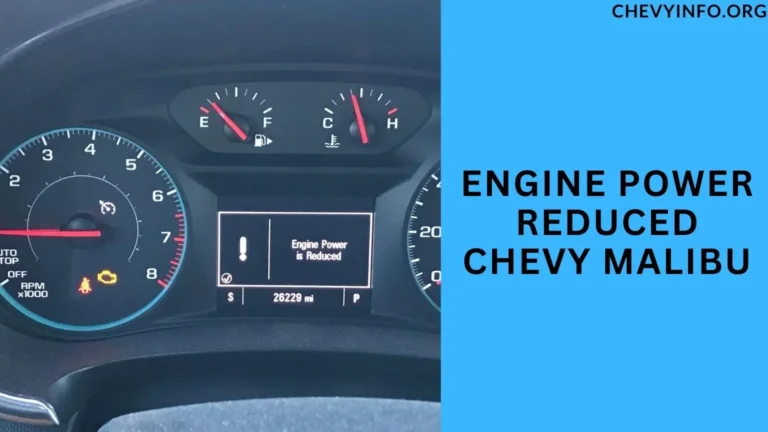Chevy 5.7 Oil Capacity (Explained) of 2024
When it comes to maintaining your vehicle, understanding essential details like oil capacity can make a significant difference in its performance and longevity.
In this article, we delve into the specifics of Chevy 5.7 oil capacity, providing insights into why it matters and how to manage it effectively.

Understanding the Chevy 5.7 Oil Capacity
The Chevy 5.7 engine, also known as the GM small-block engine, has been a staple in the automotive industry for decades.
Known for its power and durability, this engine requires precise oil management to deliver optimal performance.
Importance of Knowing Oil Capacity
Knowing the oil capacity of your Chevy 5.7 engine is crucial for several reasons. It ensures proper lubrication, engine cooling, and overall efficiency.
Incorrect oil levels can lead to engine damage, reduced performance, and potential breakdowns.
By staying informed about your vehicle’s oil capacity, you can enhance its durability and reliability.
Understanding Chevy 5.7 Engine Specifications
Here’s an in-depth look into understanding Chevy 5.7 engine specifications.
Engine Type
The Chevy 5.7 engine, also known as the Chevrolet 350 engine, is a V8 engine from General Motors.
It belongs to the legendary small-block engine family and has been a staple in Chevy vehicles for decades.
Known for its reliability, performance, and versatility, the Chevy 5.7 engine has undergone several iterations and improvements over the years.
Engine Displacement
The “5.7” in Chevy 5.7 refers to the engine’s displacement, which is measured in liters. In this case, it indicates a displacement of 5.7 liters (or approximately 350 cubic inches), which is a significant factor in determining the engine’s power output and torque.
Horsepower and Torque
The power output of the Chevy 5.7 engine can vary depending on the specific model, year, and any modifications.
However, in its stock configuration, it typically ranges from around 200 to 300 horsepower and 300 to 400 lb-ft of torque. These figures can be higher in performance-oriented versions or aftermarket setups.
Fuel Delivery
Most Chevy 5.7 engines feature electronic fuel injection (EFI) systems, which ensure precise fuel delivery to the combustion chambers for optimal performance and fuel efficiency.
Some earlier models may have carbureted setups, but modern versions predominantly use EFI for improved performance and emissions control.
Cylinder Configuration
The Chevy 5.7 engine follows a V8 cylinder configuration, which means it has eight cylinders arranged in two banks of four cylinders each.
This layout contributes to the engine’s smooth operation, power delivery, and balanced performance.
Compression Ratio
The compression ratio of the Chevy 5.7 engine can vary depending on factors such as the specific model, fuel type, and intended application.
Generally, it ranges from around 8:1 to 11:1. A higher compression ratio typically results in increased power output but may require higher-octane fuel for optimal performance.
Cooling System
Efficient engine cooling is crucial for maintaining optimal operating temperatures and preventing overheating.
The Chevy 5.7 engine utilizes a cooling system comprising a radiator, water pump, thermostat, and coolant to dissipate heat generated during combustion and ensure proper engine function.
Lubrication System
Proper lubrication is essential for reducing friction, minimizing wear and tear, and extending the engine’s lifespan.
The Chevy 5.7 engine employs an oil lubrication system that delivers pressurized oil to critical engine components, such as the pistons, bearings, and camshaft, ensuring smooth operation and longevity.
Emissions Control
Modern iterations of the Chevy 5.7 engine incorporate advanced emissions control technologies, such as catalytic converters and oxygen sensors,
to reduce harmful exhaust emissions and comply with stringent environmental regulations. These systems help minimize pollutants while maintaining efficient engine performance.
Steps to Check and Maintain Oil Levels
Regularly monitoring and maintaining oil levels in your Chevy 5.7 engine is vital for optimal performance. Here are the steps to check and maintain oil levels in a vehicle:
Checking Oil Level
- Park on a Level Surface: Ensure your vehicle is parked on a flat, level surface. This allows for accurate oil level readings.
- Cool Down the Engine: Let the engine cool down for a few minutes before checking the oil. Hot oil can give false readings.
- Locate the Dipstick: Open the hood of your vehicle and locate the oil dipstick. It usually has a brightly colored handle for easy identification.
- Remove and Wipe the Dipstick: Pull out the dipstick and wipe it clean with a cloth or paper towel. This ensures that you get an accurate reading.
- Reinsert the Dipstick: Fully reinsert the dipstick back into the oil reservoir tube.
- Check the Oil Level: Pull out the dipstick again and observe the oil level. It typically has markings like “Min” and “Max” or dots indicating the ideal oil level. The oil should fall between these markers.
- Interpret the Reading: If the oil level is below the minimum mark, you need to add oil. If it’s between the minimum and maximum marks, the oil level is adequate.
Adding Oil
- Choose the Right Oil: Refer to your vehicle’s manual to determine the correct oil type and viscosity grade recommended by the manufacturer.
- Open the Oil Filler Cap: Locate the oil filler cap on top of the engine and unscrew it. This allows you to access the oil reservoir.
- Add Oil Gradually: Using a funnel, pour a small amount of oil into the oil filler hole. Wait a few moments for the oil to settle, then recheck the oil level using the dipstick.
- Check Oil Level Again: Repeat the process of checking the oil level with the dipstick. Add more oil gradually until the level reaches the “Max” or desired level on the dipstick.
- Replace the Oil Filler Cap: Once you’ve reached the correct oil level, securely screw back the oil filler cap to prevent any leaks.
Regular Oil Changes
- Follow the Manufacturer’s Recommendations: Consult your vehicle’s manual for the recommended oil change intervals. This typically ranges from 3,000 to 5,000 miles or every 6 months, but it can vary based on driving conditions and oil type.
- Gather Supplies: Obtain the necessary supplies, including the correct oil filter, engine oil of the recommended type and grade, a wrench for the oil drain plug, and a drain pan.
- Prepare the Vehicle: Park the vehicle on a level surface and allow the engine to cool down.
- Drain the Old Oil: Position the drain pan under the oil drain plug, remove the plug using a wrench, and let the old oil drain completely.
- Replace the Oil Filter: Remove the old oil filter and replace it with a new one. Apply a thin layer of oil to the new filter’s gasket before installation.
- Add New Oil: Pour the recommended amount of new oil into the engine through the oil filler cap.
- Check Oil Level: After adding new oil, check the oil level using the dipstick to ensure it’s within the acceptable range.
- Dispose of Old Oil Properly: Transfer the old oil from the drain pan to a sealable container and take it to a recycling center or an automotive service facility for proper disposal.
Common Mistakes to Avoid
Here are some common mistakes to avoid when it comes to maintaining the oil capacity of a Chevy 5.7 engine:
Overfilling the Oil
Adding more oil than recommended can lead to excessive pressure within the engine, causing leaks and potential damage to engine components.
Neglecting Oil Changes
Skipping oil changes or extending the intervals beyond what’s recommended can result in old, degraded oil that loses its lubricating properties, leading to increased friction and wear.
Using the Wrong Oil Type
Using oil that doesn’t meet the manufacturer’s specifications in terms of viscosity and quality can compromise engine performance and longevity.
Ignoring Oil Leaks
Ignoring signs of oil leaks can lead to a gradual loss of oil, eventually causing low oil levels and inadequate lubrication, which can damage the engine.
Not Checking Oil Levels Regularly
Failing to check oil levels regularly can result in running the engine with low oil, leading to increased friction, overheating, and potential engine failure.
People also ask
How much oil does a 5.7 Chevy 350 take?
A 5.7 Chevy 350 typically takes around 5 to 6 quarts of oil, but it’s always best to refer to the owner’s manual for precise specifications.
How much oil does a 5.7 Chevy 1500 take?
A 5.7 Chevy 1500 typically takes around 5 to 6 quarts of oil, but it’s advisable to check the owner’s manual for exact specifications.
How much oil does a 5.7 liter engine take?
A 5.7 liter engine typically takes around 5 to 6 quarts of oil, but it’s recommended to consult the owner’s manual for the exact capacity.
How much oil does a 1990 5.7 Chevy take?
A 1990 5.7 Chevy engine typically takes around 4 to 6 quarts of oil, but it’s important to check the owner’s manual or engine specifications for the exact oil capacity.
Conclusion
In Conclusion, Understanding the Chevy 5.7 oil capacity and following proper maintenance procedures are essential for keeping your vehicle running smoothly.
By staying informed, checking oil levels regularly, and adhering to recommended oil change intervals, you can prolong the life of your Chevy 5.7 engine and enjoy optimal performance.

Henry Worner, a seasoned automotive expert with over 13 years of experience in car repair, maintenance, and performance enhancement, ChevyInfo.org was born out of a passion for Chevrolet vehicles. Henry’s deep-rooted love for everything Chevy has driven him to create a platform where fellow enthusiasts, car owners, and anyone interested in Chevy cars can find valuable insights, tips, and guidance.






